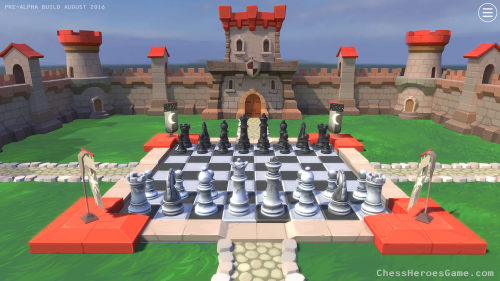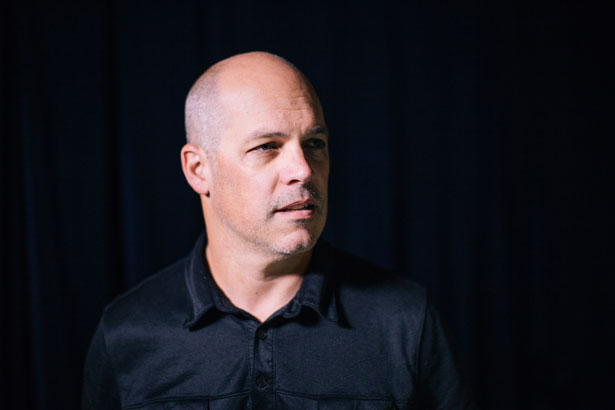
According to a 2014 study in the Journal of Communication, up to 40 percent of parents are taught how to use computers by their children.
Whether you think kids are tech zombies or you think computer coding should be taught as a second language, tech is here. And kids love it.
Video games have infiltrated schools for decades — the widely adored Oregon Trail game launched in 1971 — but as technology advances, game developers and researchers, including ones here in Eugene, see an opportunity to combine play and learning through educational gaming, or gamification.
Ted Brown, a local indie game developer, created a video game called Chess Heroes that introduces kids to chess, teaching them the basic skills they need to play with a physical board and chess pieces.
“I felt like this was a chance for me to make a game that could actually make a difference in people’s lives in a real way,” Brown says.
Brown recently launched a Kickstarter campaign to raise $20,000 for the game. If he meets his goal by Oct. 1, he plans to offer the game to schools for free through Steam, a game-downloading platform.
Chess can be daunting to young kids, but in the form of a computer game, with cute chess pieces that fly across the board and dance, it becomes something more appealing.
Brown says he knew the game could resonate with kids when he posted a demo online and got messages from excited parents who couldn’t believe their kids wanted to play chess with them.
Magdalen Rose, media producer for Chess Heroes, says the game of chess teaches skills like logic and critical thinking, and research shows it can help children who lack impulse control to hone their ability to plan ahead.
“It helps not just with math and science, but also with reading and comprehension,” Rose says.
 |
|
‘There’s a novelty in engaging students through technology,. When I’m observing groups of students and we hand out the iPads or give them access to a computer lab, the kids are excited — they’re excited in the classroom, too, but it brings a sense of novelty and allows them to attain a different level of engagement through instruction.’
— Chris Doabler
Photo by Todd Cooper. |
At the University of Oregon’s Center on Teaching and Learning (CTL), researchers test the ability of gaming technology to reinforce mathematical concepts, and they’re examining various technological strategies to help struggling young learners before they fall too far behind their classmates.
Chris Doabler, an assistant professor with the University of Texas at Austin with a research appointment at CTL, is one year into a four-year project called Precision Math that uses both print-based and tech-based methods to help first graders learn foundational math skills.
“There’s a novelty in engaging students through technology,” Doabler says. “When I’m observing groups of students and we hand out the iPads or give them access to a computer lab, the kids are excited — they’re excited in the classroom, too, but it brings a sense of novelty and allows them to attain a different level of engagement through instruction.”
In Doabler’s project, teachers and students can use iPads or other platforms to visually represent key math concepts — say, sorting and counting objects by color — and reinforce foundational skills, using technology to enhance, rather than replace, the role of the teacher.
“Children these days are involved in more technology than any other generation,” Doabler says. “It’s part of their everyday lives. That’s something we’ve tried to exploit within our work.”
Hank Fien, director of CTL, works on a project called NumberShire, a research-backed video game that Fien and his colleagues continue to test in schools around the country. The game uses storytelling and woodland creatures to accelerate learning in math.
Fien says that, as a whole, the education gaming industry needs more rigor and evidence-based methodology to show which games help students learn and which don’t.
 |
|
Ted Brown recently launched a Kickstarter campaign to raise $20,000 for the game. If he meets his goal by Oct. 1, he says he plans to offer the game to schools for free through Steam, a game-downloading platform. Photo by Todd Cooper.
|
“From my perspective, the education gaming space is very noisy,” Fien says. “If we, as a field, can really pay attention to efficacy, that could be a signal in the noise, and if we can demonstrate that well-designed games can improve learning, which requires patience and hard work, the promise of ed tech and gaming could be realized.”
Both Brown and Doabler see a future that includes more technology in the classroom, but they agree that like everything in education, it will move slowly, and however it manifests, it should supplement, not replace, the role of a teacher in math instruction.
“Game design is a medium,” Brown says. “It’s a way of expressing things and, if used correctly, it can be super powerful.”
But, he continues, “we don’t want parents to think that teachers are no longer valuable. It’s a teacher’s tool, and I think if we lose sight of that and think games will solve everything, we’ve missed the mark.”
Learn more about Doabler and Fien’s work at ctl.uoregon.edu. Visit kickstarter.com/projects/oreganik/chess-heroes to check out Brown’s Kickstarter project, which ends Oct. 1.